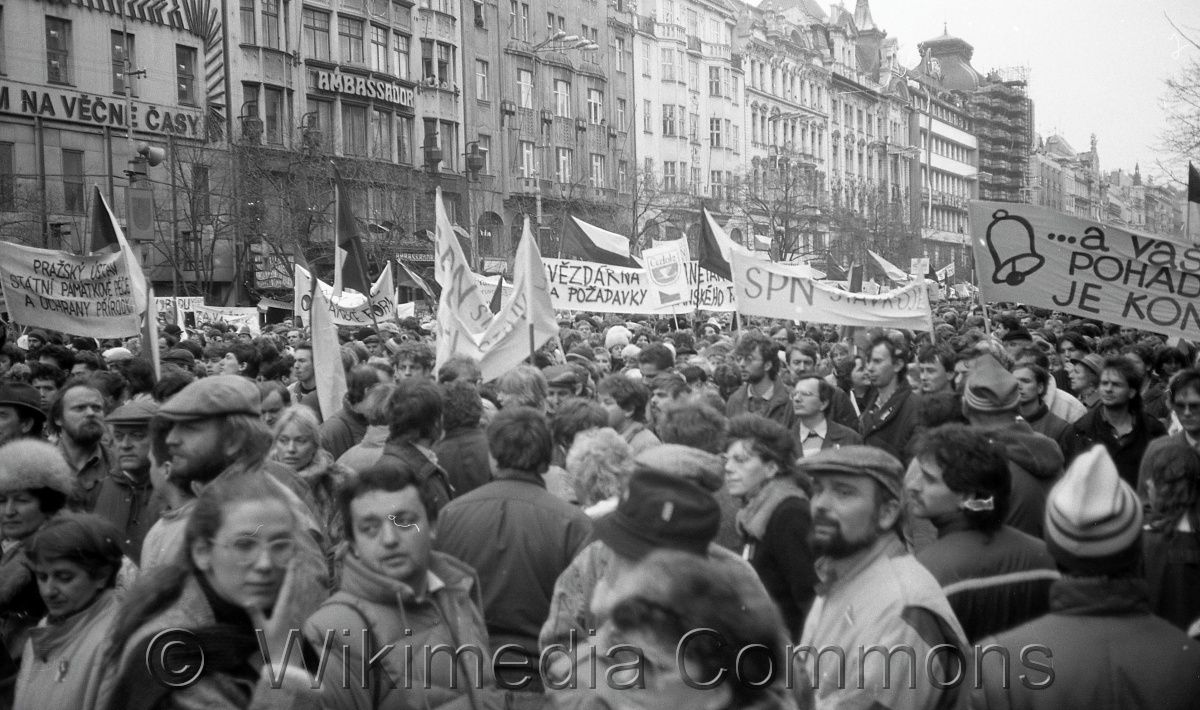Resistance Structures in the Protectorate of Bohemia and Moravia
The occupation of the Czech Lands was accompanied by growing anti-German sentiments, which developed into resistance organizations (Defence of the Nation, Petition Committee We Will Remain Faithful, Political Headquarters) determined to fight for liberation and restoration of Czechoslovakia. At the beginning of 1940, they became united in the Central Command of Home Resistance, but it was gradually broken by Nazi persecution. After a crisis following Heydrich’s assassination, the resistance joined by the communists was activated again and, also in the form of a partisan movement, culminated with an uprising at the end of the war in May 1945.
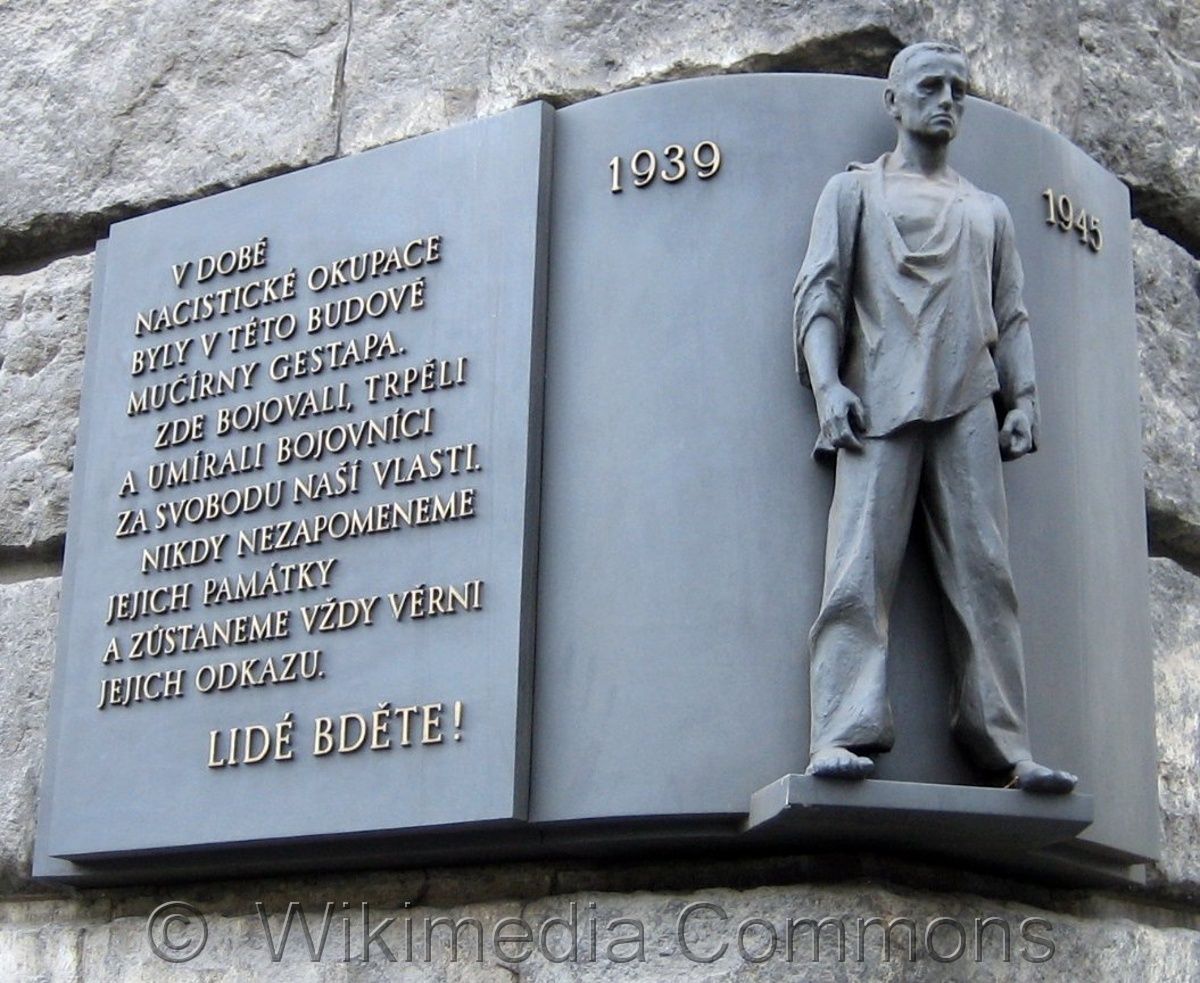
Czech Resistance Memorial on Petschek Palace. Wikimedia Commons. Accessible here.
References
Brandes, D.: Češi pod německým protektorátem. Okupační politika, kolaborace a odboj 1939–1945. Praha 2000;
Kokoška, S. (ed.): Obrana národa v dokumentech 1939–1942. Praha 2018 ;
Kural, V.: Vlastenci proti okupaci. Ústřední vedení odboje domácího 1940–1943. Praha 1997.

This work is licensed under a Creative Commons BY-NC-ND 4.0
Nazi Persecution in Bohemia, Moravia and Silesia
Immediately after the occupation of the Czech Lands, the Nazis started to build a security apparatus in the Protectorate of Bohemia and Moravia to persecute the population, in which they continued until the end of the occupation. They created systems of camps in the Protectorate to imprison, exploit and physically liquidate the Nazi regime opponents. They also persecuted the Jews and Romany people who were concentrated there and subsequently transported to extermination camps in the east.

Children's War Victims Monument in Lidice. Wikimedia Commons. Accessible here.
References
Bubeníčková, R. – Kubátová, L. – Malá, I.: Tábory utrpení a smrti. Praha 1969 ;
Blodig, V.: Terezín v „konečném řešení židovské otázky“ 1941–1945. Praha 2003;
Kyncl, V.: Bez výčitek… Genocida Čechů po atentátu na Reinharda Heydricha. Praha 2012.

This work is licensed under a Creative Commons BY-NC-ND 4.0
Retributive Justice in the Czech Lands in the Years 1945-1948
The end of the Second World War brought about the issue of punishing the Nazi criminals, traitors and their accomplices. For these purposes, Extraordinary People’s Courts were established within the county courts, supplemented with the National Court in Prague and criminal fact-finding commissions in the district local committees that assessed minor offences against the national honour. In Slovakia, the Slovak National Council issued its decrees and created its system of retributive justice.
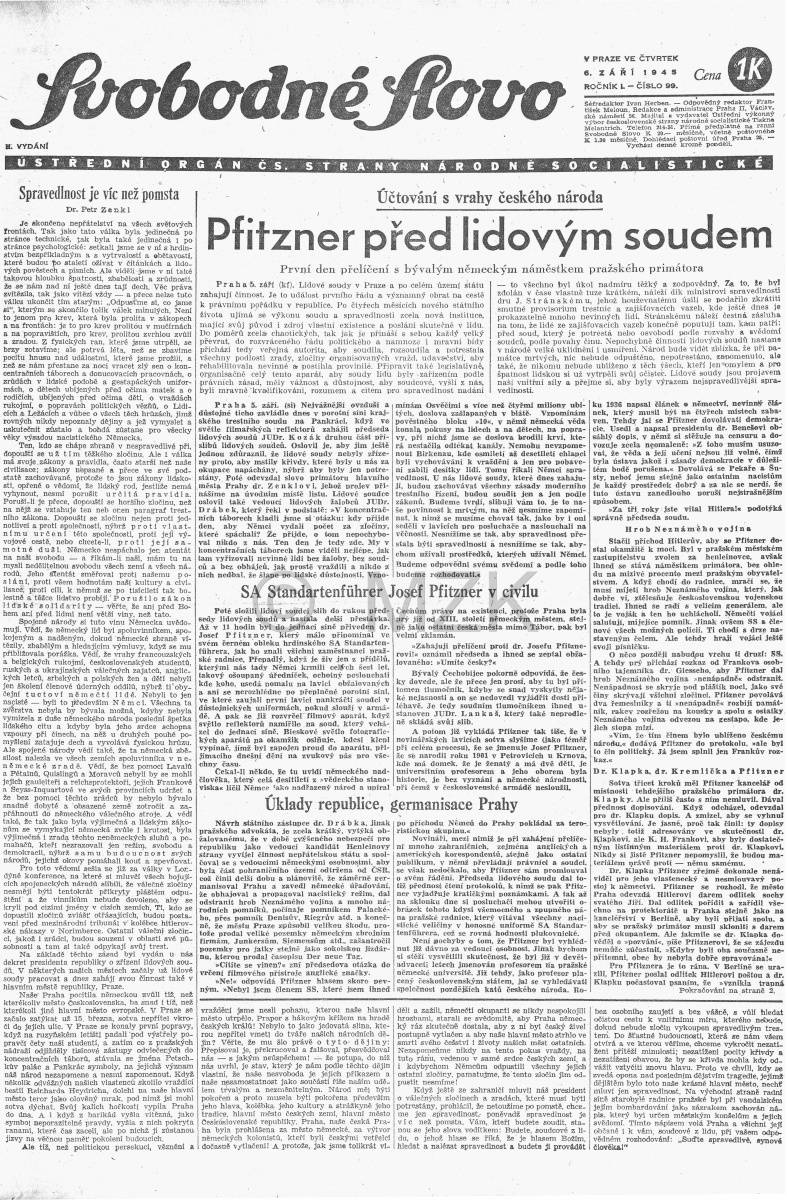
Svobodné slovo, 6 September 1945, p. 1, accessible here.
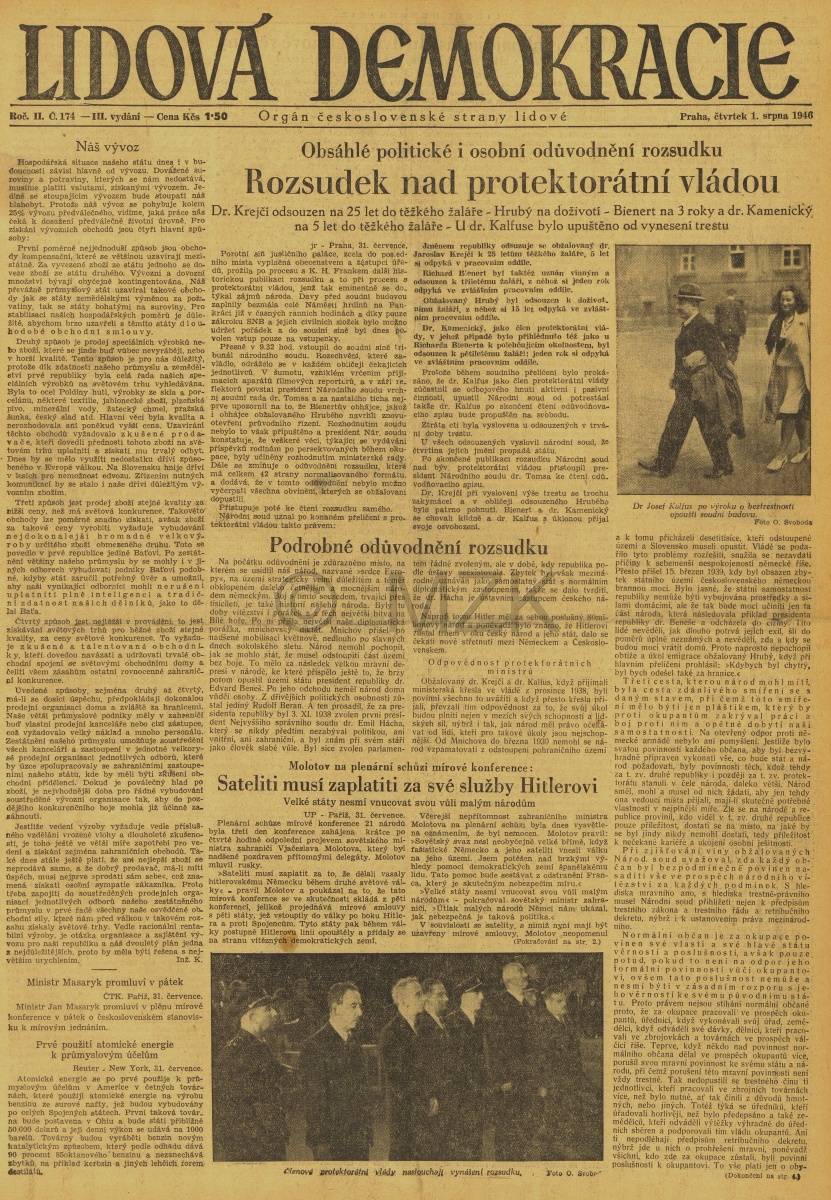
Lidová demokracie, 1 August 1946, accessible here.
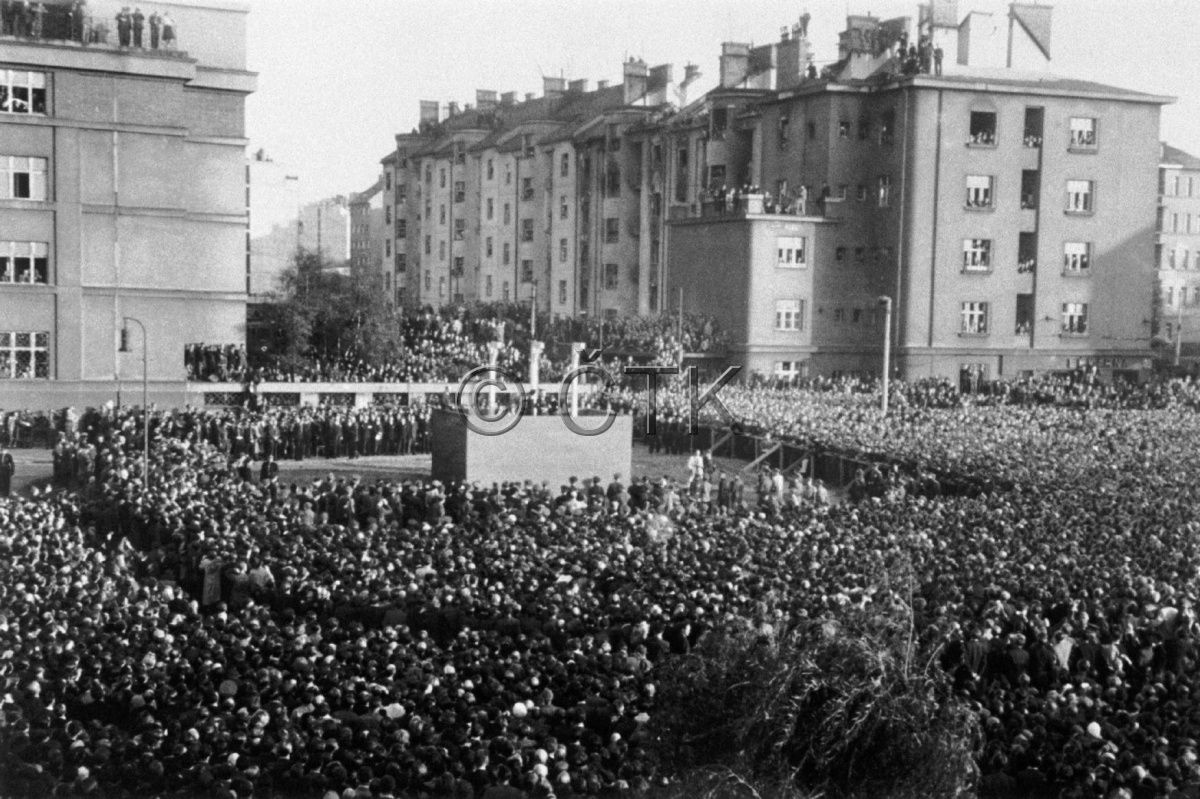
Execution of Josef Pfitzner on September 6, 1945 in the square Hrdinů. ČTK
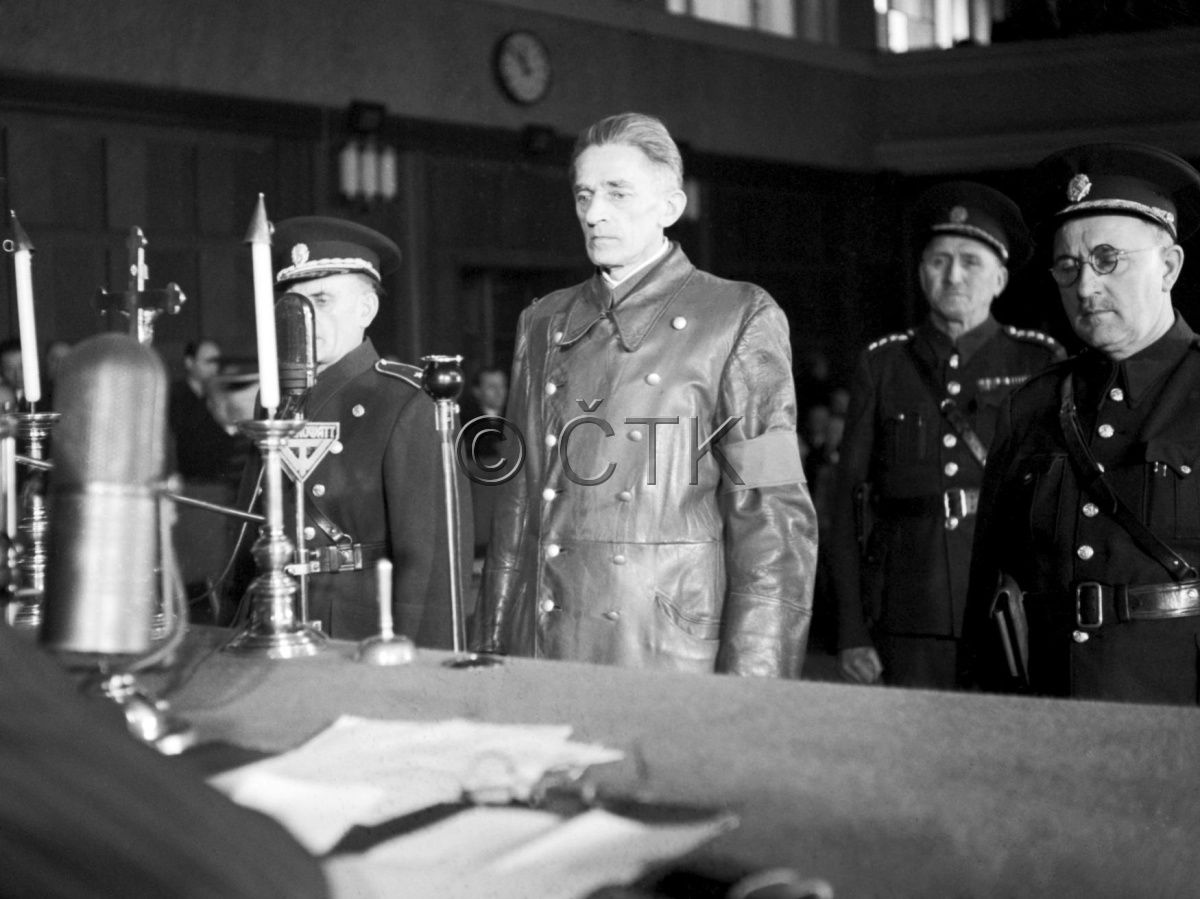
Karel Hermann Frank in the hall of the Prague Extraordinary People's Court. ČTK
References
Borák, M.: Spravedlnost podle dekretu: retribuční soudnictví v ČSR a Mimořádný lidový soud v Ostravě (1945–1948). Šenov u Ostravy: Tilia 1998;
Frommer, B.: Národní očista: retribuce v poválečném Československu. Praha: Academia 2010;
Šlouf, J. – Němečková, D.: Mimořádný lidový soud v Praze (1945–1948). Praha: Academia, 2020.

This work is licensed under a Creative Commons BY-NC-ND 4.0

